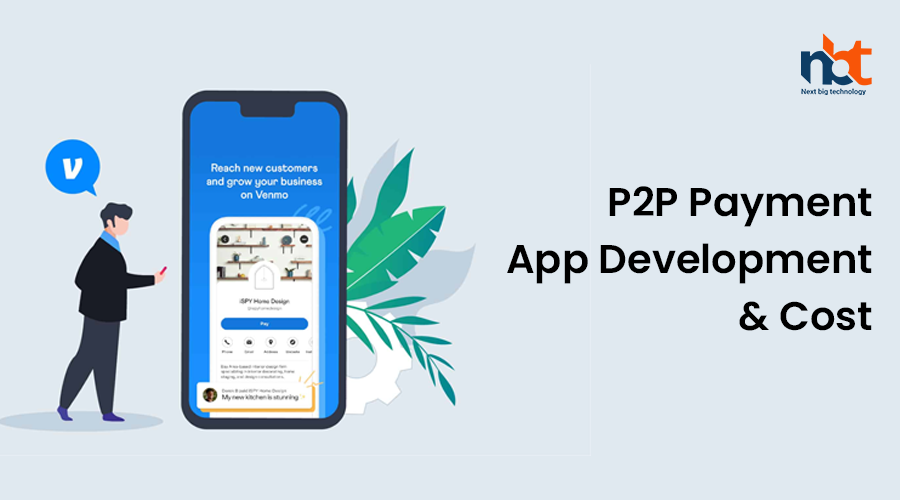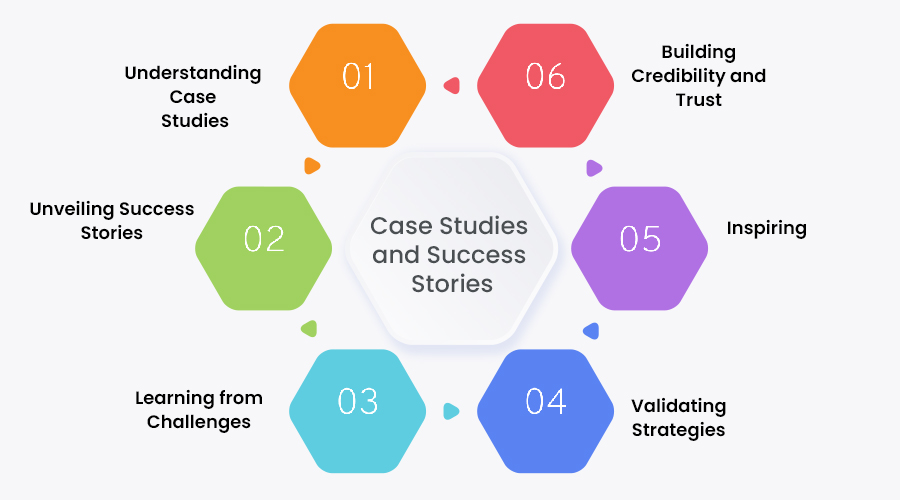Table of Contents
Introduction to P2P Payment Apps
In the age of digitalization, cash seems to be losing its reign as the primary mode of transaction. With the emergence of various financial technologies, transferring money has become as easy as sending a text message. One such innovation that has revolutionized the way we exchange funds is Peer-to-Peer (P2P) payment apps. In this article, we’ll delve into the world of P2P payment apps, understanding what they are, how they work, and why they’re becoming increasingly popular.
What Are P2P Payment Apps?
P2P payment apps, as the name suggests, allow individuals to transfer funds directly from one person to another using a mobile device or computer. Unlike traditional methods that involve cash or checks, P2P payment apps enable users to send money electronically, often in real time. These apps have gained significant traction due to their convenience, speed, and accessibility.
How Do They Work?
The workings of P2P payment apps are relatively straightforward. Users typically need to download the app onto their smartphones, create an account, and link it to their bank account or debit/credit card. Once set up, they can initiate a transfer by entering the recipient’s details, such as their phone number or email address, and the amount to be sent. The funds are then deducted from the sender’s account and deposited into the recipient’s account almost instantaneously.
Key Features and Benefits
P2P payment apps offer several features and benefits that make them appealing to users:
- Convenience: With P2P payment apps, there’s no need to carry cash or write checks. Transferring money can be done anytime, anywhere, as long as there’s an internet connection.
- Speed: Traditional bank transfers can take several days to process, but P2P payments are usually completed within minutes if not seconds.
- Security: Most P2P payment apps employ encryption and other security measures to protect users’ financial information. Additionally, users can often set up authentication methods such as PINs or biometrics for added security.
- Splitting Bills: Many P2P payment apps offer features that allow users to split bills easily among friends or family members. This feature simplifies group expenses, such as restaurant bills or shared household costs.
- Integration with Other Services: Some P2P payment apps offer additional functionalities, such as peer-to-peer lending, bill payments, or even the ability to make purchases directly from the app.
Popular P2P Payment Apps
Several P2P payment apps dominate the market, each with its own set of features and user base. Some of the most popular ones include:
- Venmo: Known for its social aspect, Venmo allows users to share payment activity with their friends through a news feed.
- PayPal: A pioneer in online payments, PayPal offers P2P transfers along with a range of other financial services.
- Cash App: Developed by Square, Cash App has gained popularity for its simplicity and versatility.
- Zelle: Integrated into many major banks’ mobile apps, Zelle enables seamless transfers between bank accounts.
- Google Pay: With its widespread adoption, Google Pay facilitates P2P payments through smartphones and smartwatches.
Key Features and Functionality
In the ever-evolving landscape of technology, understanding the key features and functionality of any product or service is paramount. Whether you’re a tech enthusiast or a casual user, grasping the intricacies of what makes a device or software tick can enhance your overall experience and productivity. Let’s delve into the essence of key features and functionality, exploring their significance and how they shape our digital world.
Key features serve as the pillars upon which a product or service stands. They are the distinguishing characteristics that set one offering apart from another, catering to specific needs and preferences. From smartphones to software applications, every innovation boasts a unique set of features designed to address user requirements comprehensively.
Functionality, on the other hand, refers to the practicality and usability of these features. It encompasses how well the features perform their intended tasks, ensuring a seamless and intuitive user experience. A product may possess an array of impressive features, but if it lacks functionality, it may fall short of meeting user expectations.
One of the fundamental aspects of key features and functionality is their alignment with user needs. Developers and manufacturers invest significant time and resources in researching user behaviour and preferences to tailor their offerings accordingly. By understanding the challenges and requirements of their target audience, they can integrate features that resonate with users, enhancing satisfaction and usability.
Moreover, key features and functionality play a crucial role in driving innovation. As technology progresses, consumers expect more advanced capabilities and enhanced performance from their devices and software. This prompts developers to constantly innovate and introduce new features that push the boundaries of what is possible. Through this iterative process, products evolve to meet the changing demands of the market, fostering growth and competitiveness.
In the realm of software development, key features and functionality are often synonymous with user interface (UI) and user experience (UX) design. A well-designed UI/UX not only showcases the product’s features but also ensures intuitive navigation and seamless interaction. By prioritizing user-centric design principles, developers can create products that are both aesthetically pleasing and highly functional, enhancing user engagement and satisfaction.
Furthermore, the importance of key features and functionality extends beyond individual products to entire ecosystems and platforms. In today’s interconnected world, users expect seamless integration and compatibility across various devices and services. This necessitates robust APIs (Application Programming Interfaces) and interoperability standards that enable different components to communicate and work together seamlessly.
From a business perspective, understanding key features and functionality is essential for crafting effective marketing strategies and driving sales. Highlighting the unique selling points and practical benefits of a product or service can attract potential customers and differentiate it from competitors. Moreover, soliciting feedback from users allows businesses to continually refine and improve their offerings, ensuring long-term success and customer loyalty.
Security Measures and Compliance
In today’s interconnected digital landscape, businesses face a myriad of security threats that can jeopardize sensitive data, disrupt operations, and damage reputation. From cyberattacks to regulatory requirements, navigating the complex realm of security measures and compliance is paramount for safeguarding your organization’s assets and maintaining trust among stakeholders. Let’s delve into some essential strategies to fortify your business against potential risks while ensuring adherence to compliance standards.
Understanding Security Measures
Implementing robust security measures involves a multifaceted approach that encompasses both technological solutions and organizational protocols. Here are some fundamental strategies to bolster your business’s security posture:
- Risk Assessment: Conduct a comprehensive risk assessment to identify potential vulnerabilities and prioritize mitigation efforts accordingly. This involves evaluating both internal and external threats, such as malware, phishing attacks, and physical breaches.
- Data Encryption: Encrypting sensitive data both in transit and at rest adds an extra layer of protection against unauthorized access. Utilize encryption protocols such as SSL/TLS for network communications and encryption algorithms for stored data.
- Access Control: Limit access to critical systems and data by implementing strong authentication mechanisms such as multi-factor authentication (MFA) and role-based access control (RBAC). Regularly review and update user permissions to ensure least privilege access.
- Regular Updates and Patch Management: Stay vigilant against emerging threats by promptly applying software updates, patches, and security fixes. Outdated software and firmware are often exploited by cybercriminals to exploit known vulnerabilities.
- Employee Training and Awareness: Invest in cybersecurity training programs to educate employees about best practices for identifying and responding to security threats. Foster a culture of security awareness to empower employees to become the first line of defense against cyber threats.
Navigating Compliance Requirements
Compliance with industry regulations and standards is essential for maintaining trust, mitigating legal risks, and avoiding costly penalties. Here are key compliance frameworks that businesses need to consider:
- General Data Protection Regulation (GDPR): If your business handles the personal data of EU residents, compliance with GDPR is mandatory. Ensure transparent data processing practices, obtain explicit consent for data collection, and implement measures to protect individual privacy rights.
- Payment Card Industry Data Security Standard (PCI DSS): Businesses that handle payment card information must adhere to PCI DSS requirements to safeguard cardholder data from theft and fraud. This involves implementing secure payment processing systems, encrypting cardholder data, and regularly assessing and addressing vulnerabilities.
- Health Insurance Portability and Accountability Act (HIPAA): Healthcare organizations and their business associates must comply with HIPAA regulations to protect the confidentiality, integrity, and availability of patients’ protected health information (PHI). This includes implementing safeguards such as access controls, encryption, and audit trails.
- ISO/IEC 27001: ISO 27001 is an internationally recognized standard for information security management systems (ISMS). Achieving ISO 27001 certification demonstrates your commitment to implementing a systematic approach to managing sensitive information and mitigating security risks.
- Sarbanes-Oxley Act (SOX): Publicly traded companies in the United States must comply with SOX regulations to ensure the accuracy and integrity of financial reporting. This involves establishing internal controls and procedures for financial reporting and disclosure.
User Interface and Experience Design
In the digital age, where technology is seamlessly integrated into our daily lives, the significance of user interface (UI) and user experience (UX) design cannot be overstated. From mobile apps to websites, software, and beyond, a well-thought-out UI/UX design can make all the difference between user delight and frustration.
User Interface Design: The Art of Visual Communication
User interface design focuses on the look and feel of digital products. It’s about creating visually appealing layouts that are intuitive and easy to navigate. Here are some key principles to keep in mind:
- Simplicity: The mantra of UI design is to keep it simple. Cluttered interfaces overwhelm users and lead to confusion. Embrace minimalism by eliminating unnecessary elements and focusing on what truly matters.
- Consistency: Consistency breeds familiarity, which in turn enhances usability. Maintain uniformity in design elements such as colors, fonts, and icons throughout the interface to create a cohesive experience.
- Visual Hierarchy: Guide users’ attention by establishing a clear visual hierarchy. Use size, color, and contrast to highlight important elements and prioritize content based on its significance.
- Feedback: Provide feedback to users for every action they take. Whether it’s a button press or form submission, visual cues such as animations, transitions, and tooltips reassure users that their actions are being registered.
User Experience Design: Shaping Emotions and Interactions
User experience design is all about understanding the needs and desires of users and creating products that fulfill them seamlessly. Here are some essential UX design principles:
- User Research: Start by understanding your target audience through comprehensive research. Conduct interviews, surveys, and usability tests to gain insights into their behavior, preferences, and pain points.
- Persona Development: Create user personas based on your research findings. Personas represent fictional characters that embody the characteristics and goals of your target audience, helping you design with empathy and relevance.
- User Flows: Map out user flows to visualize the journey users take within your product. Identify potential bottlenecks and streamline the flow to ensure a smooth and intuitive experience from start to finish.
- Accessibility: Design with inclusivity in mind by ensuring that your product is accessible to users of all abilities. Consider factors such as screen readers, keyboard navigation, and color contrast to accommodate diverse needs.
The Intersection of UI and UX Design: Achieving Synergy
While UI and UX design are distinct disciplines, they are intrinsically interconnected. A visually appealing interface means little if the user experience is cumbersome, and conversely, a seamless experience can be undermined by poor aesthetics.
To achieve synergy between UI and UX design:
- Collaboration: Foster collaboration between designers, developers, and stakeholders to align goals and priorities. Encourage open communication and feedback throughout the design process to iteratively improve the product.
- Prototyping: Use prototyping tools to bring your designs to life and gather feedback early in the development cycle. Prototypes allow stakeholders to interact with the product and provide valuable insights for refinement.
- Iterative Design: Embrace an iterative design approach by continuously testing and refining your designs based on user feedback. Iterate rapidly to address usability issues and incorporate new insights into subsequent iterations.
Backend Infrastructure Requirements
In the dynamic landscape of modern technology, where digital solutions are becoming increasingly sophisticated, the importance of a robust backend infrastructure cannot be overstated. Whether you’re building a web application, a mobile app, or any other digital platform, the backend serves as the foundation that supports your entire system. In this article, we will delve into the intricacies of backend infrastructure requirements, shedding light on the key components and considerations necessary for a seamless and scalable backend architecture.
Understanding Backend Infrastructure: Before delving into the specific requirements, it’s essential to understand what constitutes backend infrastructure. Essentially, backend infrastructure encompasses the hardware, software, and networking components that enable the functioning of the server-side of an application. This includes servers, databases, frameworks, APIs, and other supporting technologies.
Scalability and Performance: Scalability and performance are paramount considerations when designing backend infrastructure. As your application grows and experiences increased traffic, your backend should be capable of scaling seamlessly to accommodate the demand without compromising performance. This necessitates the use of scalable server architectures, load balancers, and efficient database management systems.
Reliability and Availability: Ensuring the reliability and availability of your backend infrastructure is crucial for maintaining a positive user experience. Downtime can result in lost revenue, diminished user trust, and damage to your brand reputation. Implementing redundancy, failover mechanisms, and disaster recovery strategies is essential to mitigate the risk of downtime and ensure high availability.
Security: Security is a top priority in any digital environment, and backend infrastructure is no exception. Protecting sensitive data, preventing unauthorized access, and defending against cyber threats are imperative for safeguarding your application and its users. This entails implementing robust authentication mechanisms, encryption protocols, and adhering to security best practices throughout the development and deployment process.
Flexibility and Adaptability: In today’s rapidly evolving technology landscape, flexibility and adaptability are essential attributes of backend infrastructure. Your backend should be designed in a modular and flexible manner, allowing for easy integration of new features, technologies, and third-party services. Embracing microservices architecture, containerization, and serverless computing can enhance agility and facilitate seamless updates and deployments.
Monitoring and Maintenance: Effective monitoring and maintenance are indispensable for ensuring the optimal performance and health of your backend infrastructure. Implementing comprehensive monitoring tools and practices enables proactive detection of issues, performance bottlenecks, and security threats. Regular maintenance, including software updates, patches, and system optimizations, is essential for keeping your backend infrastructure running smoothly.
Cross-Platform Compatibility
In today’s digital age, where users seamlessly transition between devices and platforms, ensuring cross-platform compatibility has become paramount for businesses aiming to provide a smooth and consistent experience to their audience. Whether it’s a website, an application, or any digital product, compatibility across various platforms such as desktops, mobile devices, and tablets is no longer an option but a necessity.
Cross-platform compatibility refers to the ability of a software application or digital content to function smoothly across different operating systems, devices, and browsers. It ensures that users can access and interact with the content or application regardless of the device or platform they are using, without encountering any glitches or limitations.
One of the key benefits of cross-platform compatibility is enhanced user experience. In today’s fast-paced world, users expect seamless access to information and services across all their devices. Whether they are browsing a website on their desktop during office hours or using a mobile app on their smartphone while on the go, users want consistency in functionality and design. By ensuring cross-platform compatibility, businesses can deliver a uniform experience across all touchpoints, thereby increasing user satisfaction and engagement.
Moreover, cross-platform compatibility also expands the reach of digital products or services. With users accessing the internet from a wide range of devices and platforms, catering to only one platform can limit the audience’s reach. By ensuring compatibility across multiple platforms, businesses can tap into a larger user base, irrespective of their preferred device or operating system. This not only helps in reaching more potential customers but also improves brand visibility and recognition.
Furthermore, cross-platform compatibility contributes to increased efficiency and reduced development costs. Instead of building separate applications or versions for each platform, developers can leverage cross-platform development frameworks and technologies to create a single codebase that can be deployed across multiple platforms. This streamlines the development process, reduces time-to-market, and lowers development and maintenance costs, making it a cost-effective solution for businesses of all sizes.
Additionally, cross-platform compatibility plays a crucial role in search engine optimization (SEO). Search engines prioritize mobile-friendly websites and applications in their search results, considering the growing number of users accessing the internet via mobile devices. By ensuring cross-platform compatibility and optimizing digital content for different devices, businesses can improve their search engine rankings and drive more organic traffic to their platforms.
Customization Options for Users
In today’s fast-paced digital landscape, customization has become the cornerstone of user experience. From personalized recommendations on streaming platforms to tailored product suggestions on e-commerce websites, customization options are everywhere, enriching our interactions with technology and enhancing our daily lives. In this article, we delve into the realm of customization options for users, exploring its significance, impact, and the myriad ways it empowers individuals in their digital journey.
Understanding the Significance: Customization options are not merely features; they represent a paradigm shift in how we engage with technology. They acknowledge the uniqueness of each user and seek to cater to their individual preferences, tastes, and needs. Whether it’s choosing a preferred theme for a smartphone interface or setting up notifications for a productivity app, customization puts the user in the driver’s seat, allowing them to mold their digital environment according to their liking.
Empowering Users: One of the most significant advantages of customization options is the empowerment it offers to users. Instead of conforming to predefined settings or interfaces, individuals can personalize their digital experience to align with their personality and workflow. This empowerment fosters a sense of ownership and control, enhancing user satisfaction and engagement.
Tailored Solutions: Customization options enable the delivery of tailored solutions that cater to specific user requirements. For instance, in e-learning platforms, students can choose their preferred learning paths, formats, and pacing, ensuring a personalized learning experience that resonates with their learning style. Similarly, in gaming, players can customize their avatars, game settings, and difficulty levels, creating a gaming experience that is uniquely theirs.
Enhancing Accessibility: Another crucial aspect of customization options is their role in enhancing accessibility. By allowing users to adjust settings such as font size, color contrast, and interface layout, digital products can accommodate individuals with diverse needs and preferences. This inclusivity ensures that technology remains accessible to all, irrespective of physical abilities or limitations.
Driving Engagement and Loyalty: Customization options not only enhance user experience but also drive engagement and foster loyalty. When users feel that a product or service caters to their individual needs, they are more likely to invest time and effort into using it. Moreover, the emotional connection forged through customization fosters a sense of loyalty, encouraging users to remain loyal advocates of the brand.
Future Trends: As technology continues to evolve, the future of customization options holds exciting possibilities. Advanced algorithms powered by artificial intelligence and machine learning will enable even more personalized experiences, predicting user preferences and adapting in real-time. Moreover, the integration of augmented reality (AR) and virtual reality (VR) will open up new frontiers for immersive and customizable interactions, further enriching the user experience.
Testing and Quality Assurance
In the dynamic realm of software development, where innovation and speed are paramount, ensuring the quality of products has never been more critical. Enter testing and quality assurance (QA), the unsung heroes behind every successful software application. In this article, we delve into the significance of testing and QA, exploring their roles, methodologies, and the impact they have on the final product.
Understanding Testing and Quality Assurance
At its core, testing is the systematic process of evaluating a product or system to identify any discrepancies between expected and actual results. Quality assurance, on the other hand, focuses on preventing defects by establishing processes and standards to ensure that the product meets the desired level of quality.
The Importance of Testing and QA
Testing and QA serve as the guardians of quality in software development. They help detect and rectify defects early in the development lifecycle, saving time and resources in the long run. By identifying issues before deployment, they mitigate the risk of costly errors and ensure a seamless user experience.
Types of Testing
Testing encompasses a myriad of methodologies, each tailored to address specific aspects of the software. Some common types of testing include:
- Functional Testing: Evaluates the functionality of the software against predetermined specifications.
- Performance Testing: Assesses the system’s responsiveness, scalability, and stability under varying load conditions.
- Security Testing: Identifies vulnerabilities and ensures that the software is resistant to malicious attacks.
- Usability Testing: Focuses on the user interface and user experience, ensuring that the software is intuitive and easy to navigate.
The QA Process
Quality assurance is not a one-time activity but rather an ongoing process integrated throughout the development lifecycle. It involves:
- Establishing Standards: Defining clear standards and guidelines for development, testing, and deployment.
- Continuous Testing: Conducting regular testing at every stage of development to maintain quality standards.
- Bug Tracking and Reporting: Documenting and prioritizing identified defects for timely resolution.
- Feedback Loop: Soliciting feedback from stakeholders to identify areas for improvement and refinement.
The Impact on the Final Product
The efficacy of testing and QA directly influences the quality and reliability of the final product. A robust testing framework ensures that the software performs as intended, meeting user expectations and driving customer satisfaction. Moreover, it enhances the credibility of the brand, fostering trust and loyalty among users.
Case Studies and Success Stories
In the world of business and marketing, case studies stand as beacons of success, illuminating the path for others to follow. These narratives, rooted in real-life experiences, showcase how challenges were overcome, strategies were executed, and triumphs were achieved. From startups to multinational corporations, case studies provide invaluable insights into the dynamics of various industries and offer a roadmap for achieving similar feats. Let’s delve deeper into the realm of case studies and explore the profound impact they have on businesses and beyond.
Understanding Case Studies: Case studies are detailed examinations of a particular subject, such as a business, project, or campaign, focusing on its background, challenges faced, strategies employed, and outcomes achieved. They serve as compelling narratives, blending qualitative and quantitative data to illustrate success stories in a relatable and informative manner.
Unveiling Success Stories: One of the most significant benefits of case studies is their ability to showcase real-world success stories. These narratives not only highlight achievements but also shed light on the journey undertaken to reach those milestones. Whether it’s a small business surpassing revenue targets or a nonprofit organization making a meaningful impact in its community, success stories inspire and motivate others to strive for excellence.
Learning from Challenges: Behind every success story lies a series of challenges and obstacles. Case studies provide a transparent account of these hurdles, offering valuable lessons for readers. By understanding how others navigated through setbacks and adversities, businesses can glean insights into effective problem-solving strategies and resilience in the face of uncertainty.
Validating Strategies: In the fast-paced world of business, implementing new strategies can be daunting. Case studies serve as a litmus test, validating the efficacy of various approaches through real-world examples. Whether it’s a marketing campaign, product launch, or operational overhaul, businesses can leverage case studies to assess the potential outcomes of their strategies and make informed decisions.
Inspiring Innovation: Innovation thrives on inspiration, and case studies provide a fertile ground for creative thinking. By examining how others have innovated within their respective industries, businesses can identify new opportunities, rethink existing processes, and foster a culture of innovation within their organizations. Success stories serve as catalysts for change, fueling the desire to push boundaries and explore uncharted territory.
Building Credibility and Trust: For businesses looking to establish credibility and earn the trust of their audience, case studies play a pivotal role. These real-life testimonials showcase tangible results, demonstrating the value proposition of products or services in a compelling manner. Whether it’s through customer testimonials, performance metrics, or ROI analysis, case studies provide irrefutable evidence of success, instilling confidence in potential customers and partners.
Top P2P Payment App Development & Cost Companies
In today’s digitally driven world, peer-to-peer (P2P) payment apps have become the go-to solution for hassle-free money transfers between individuals. Whether it’s splitting bills, paying rent, or reimbursing a friend, P2P payment apps offer convenience, speed, and security. If you’re considering developing a P2P payment app or looking to invest in one, it’s crucial to choose the right development company. In this article, we’ll delve into some of the top P2P payment app development companies, analyze their costs, and explore their features.
-
-
Next Big Technology:

Focus Area
- Mobile App Development
- App Designing (UI/UX)
- Software Development
- Web Development
- AR & VR Development
- Big Data & BI
- Cloud Computing Services
- DevOps
- E-commerce Development
Industries Focus
- Art, Entertainment & Music
- Business Services
- Consumer Products
- Designing
- Education
- Financial & Payments
- Gaming
- Government
- Healthcare & Medical
- Hospitality
- Information Technology
- Legal & Compliance
- Manufacturing
- Media
Key features:
- Seamless peer-to-peer transfers
- Multi-platform compatibility (iOS, Android)
- Secure payment processing
- User-friendly interface
- Integration with popular payment gateways
-
- WillowTree: WillowTree specializes in crafting high-quality digital experiences, including P2P payment solutions. With a focus on user-centric design and cutting-edge technology, WillowTree delivers robust and scalable apps tailored to clients’ specific requirements. The cost of P2P payment app development with WillowTree starts from $70,000 and can go up based on customization and additional features.Key features:
- Customizable transaction limits
- Instant notifications
- Biometric authentication
- Split bills and group payments
- Peer-to-peer messaging
- Consagous Technologies: Consagous Technologies is a leading provider of P2P payment app development services, catering to businesses of all sizes. They leverage the latest technologies, such as blockchain and AI, to build secure and efficient payment solutions. The cost of developing a P2P payment app with Consagous Technologies ranges from $40,000 to $150,000, depending on project complexity.Key features:
- Blockchain-powered security
- QR code scanning for quick transfers
- Real-time transaction tracking
- Multi-currency support
- In-app customer support chat
- Peerbits: Peerbits is a globally recognized app development company with expertise in P2P payment app development. They focus on delivering seamless user experiences and scalable solutions that meet clients’ business objectives. The cost of developing a P2P payment app with Peerbits starts from $30,000 and varies based on features and customization.Key features:
- NFC technology for contactless payments
- In-app card management
- Budget tracking and analytics
- Two-factor authentication
- Cross-border payments














